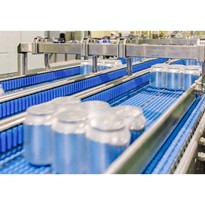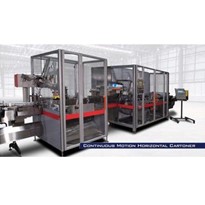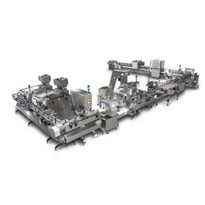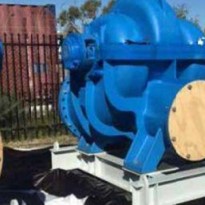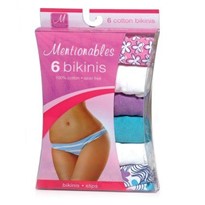The Critical Role of Capping in Packaging
Capping, an essential step in the packaging process, serves multiple critical functions. It ensures the integrity and safety of products, especially in sectors like food, beverages, pharmaceuticals, and cosmetics. Proper capping prevents contamination, leakage, and preserves the product’s quality during transportation and storage. This process is vital for maintaining consumer trust and adherence to industry standards.
Icon Equipment’s Advanced Capping Solutions
Icon Equipment specializes in various capping solutions tailored to diverse industry needs. We offer Inline Cappers, Rotary Cappers, Pick & Place Cappers, and Lidders, each designed to efficiently handle different types of containers and caps. These solutions are not only about securing a cap but also about ensuring consistent quality and high-speed operation, crucial for modern production lines.
Types of Capping Machines
Inline Cappers
Design and Functionality
Inline Cappers are versatile machines designed for precision capping of various containers. They operate by moving containers linearly through the capping process, where caps are applied and securely tightened. This design is suitable for a range of cap types and sizes, making Inline Cappers a flexible option for diverse packaging needs. For more details, visit Icon Equipment’s Inline Cappers page.
Ideal Use Cases:
Ideal for environments where flexibility and adaptability are key, Inline Cappers are widely used in industries where a variety of products and packaging types are processed, particularly in food and beverage and pharmaceutical sectors.
Rotary Cappers
How They Differ from Inline Cappers
Rotary Cappers differ in their operational style. Unlike Inline Cappers, they cap bottles in a rotary fashion, making them more suitable for higher speed production lines. This method allows for continuous capping with minimal bottle handling. Learn more about Rotary Cappers at Icon Equipment’s Rotary Cappers page.
Advantages and Suitable Industries:
Their high-speed capability and efficiency make them ideal for industries with large-scale production needs. They are particularly advantageous in sectors that require fast throughput without sacrificing precision, such as in large-scale beverage production.
Pick & Place Cappers
Unique Features
Pick & Place Cappers are specialized for precise placement of caps on containers. These machines pick up individual caps, place them accurately on containers, and then secure them in place. This method is particularly effective for irregularly shaped caps or containers. Discover more on Icon Equipment’s Pick & Place Cappers page.
Applications and Efficiency:
They are highly efficient in scenarios where precision is paramount. Industries like specialty chemicals or health care products, where containers might have unique shapes or require specific capping methods, benefit greatly from these cappers.
Lidders
Specialization in Lid Placement:
Lidders are designed specifically for placing and securing lids on containers, distinct from traditional cap packaging methods. They are adept at handling larger or more complex lids that require precise alignment and placement.
Industry-Specific Uses:
Lidders are commonly used in industries where products are packaged in larger containers or require a specific type of seal, such as certain food products or industrial goods.
Selection Criteria for Capping Machines
Assessing Product and Cap Requirements
Understanding the Product:
The first step in selecting a capping machine is understanding the product’s specific requirements. Factors like the product’s viscosity, container material, and cap type (screw cap, snap cap, etc.) play a crucial role in determining the appropriate capping solution.
Cap Compatibility:
The cap’s material, size, and shape must be compatible with the capping machine. This ensures a secure and proper seal, crucial for product preservation. For example, delicate caps might require gentler handling, which certain machines are better equipped to provide.
Evaluating Production Speed and Volume
Production Capacity Needs:
Different capping machines offer varying production speeds. High-speed rotary cappers are ideal for large-scale, high-volume production lines, while inline cappers might be more suitable for smaller or more varied production runs.
Future-Proofing:
It’s important to consider not just current production needs but also potential future scale-ups. A machine that can handle increasing production demands without significant overhauls can be a more cost-effective choice in the long run.
Compatibility with Existing Packaging Lines
Integration with Current Systems:
The selected capping machine should seamlessly integrate with existing packaging lines. This includes compatibility with conveyor speeds, filling machines, and labeling systems.
Flexibility and Adaptability:
Machines that offer flexibility in terms of container and cap types can be more advantageous, especially for businesses that anticipate changes in product lines or packaging designs.
Safety and Compliance Standards
Adherence to Regulations:
In certain industries, like pharmaceuticals and food and beverages, capping machines must comply with specific safety and hygiene standards.
Operator Safety:
The safety features of the machine, such as emergency stops, guards, and user-friendly interfaces, are important for the safety of the operators and should be a key consideration.




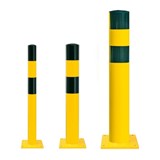






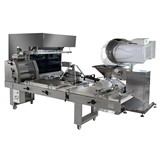

-160x160-state_article-rel-cat.png)






-160x160-state_article-rel-cat.png)



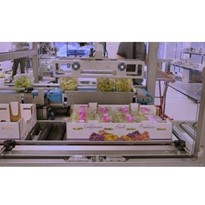
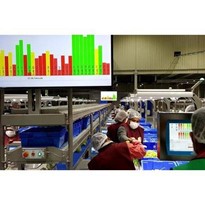
-205x205.jpg)


